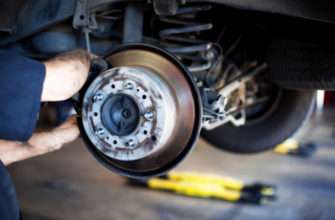Getting your tires checked is like going to see a dentist. It is something we should do very often, but we put off until we really ‘need’ to. Tires are one of the most underrated components of a car. Where the treads on your tire makes contact with the road affects the handling, steering, traction, stability, and braking, all of which contribute to your safety and that of other road users.
As tire tread wears down, it becomes less reliable, and completely unsafe when they wear down to 1⁄16 of an inch. At this point, sudden tire failure can have serious consequences, especially in a vehicle with a high center of gravity or if it occurs at highway speeds.
Performing a monthly visual check of your tires can help you spot early tire warning signs. But, how do you know when you need new tires? How do you know when it’s time to have them replaced?
Here are a number of ways to tell when your tires need replacing, and you shouldn’t wait until your tires are obviously worn before getting them replaced. Relying on visual inspection alone isn’t enough to know when to replace your tires, or whether you need a wheel alignment.
Check Your Tread Wear Bars
Most new tires now have tread wear bars on the grooves. These small raised bars of rubber provide a more convenient way to check for tire wear. Take a close look at the patterns on a tire (preferably a new one) you’ll notice these bars running between the grooves, look for a round shape or flat rubber that runs perpendicular to the tread direction.
As your tires wear out, these tread wear bars will become visible on the same level as you tread. When this is the case, you should plan for replacements as soon as possible.
Do a Penny Test
This is one easy way to check the tread on your tires for safety. Take a penny and place Lincoln’s head upside down in one of the grooves of the tire tread. If you can’t see some of Lincoln’s head, then you still have more than 2/32 of an inch of tread remaining.
If you can see the top of Lincoln’s head, then it means your tire tread is worn below the recommended 2/32th of an inch tread, which is very little and unsafe. Ensure to test all around the tire treads so you know if you have an even wear or not.
Cracks in the Sidewall
The sidewalls of your tires wear out too from exposure to the elements and will show you signs that your tires need replacements. Watch out for cuts, hairline cracks, or grooves. These are signs that the integrity of your tire low and it is now gearing up for a leak or a blowout. If they’re distinct enough to be visible to the naked eye, then they’re unsafe and unfit for driving. If you see cracks, then it’s time to get your tires replaced.
Bulges and Blisters
As the exterior of a tire weakens from normal wear, bulge or blister may form in certain weak spots on the tire surface. Bulges mostly appear in a tire after impact. It can happen when hitting a pothole or a curb and is sometimes caused by a manufacturing defect.
These weak spots can cause a sudden blowout which is why you need to inspect your tires daily, and if you start to see anything extending from the tire surface you should consider making an appointment to get it replaced before it causes any harm.
Too Much Vibration
It is very normal to feel vibrations in your car as you navigate the road more so on bumpy roads. If you’ve been driving the same vehicle for some time, you probably have an idea of how much vibration feel normal and how much means your car needs to be checked.
Misaligned or unbalanced wheels will create vibrations that progressively gets worse as you speed up, usually starting at 40 to 50 mph and increases in intensity as you drive faster. This is, and an irregular wear pattern on your tires are indications that your wheels are unbalanced, misaligned, or your shock absorbers are starting to fail. Most times the tires may not be the source of the problem that ends up damaging your tires.
If wheel balancing doesn’t correct or reduce the vibration, then there could be an internal problem with your tire, and you should have them looked at by a professional.
Weathering
Your tires are constantly exposed to the elements, heat, cold, snow, dirt, water, and UV rays from the sun. Rubber, like every material, degrades over time from such exposure. Some common signs of weathering are cracks in between tread blocks on the tire tread and fine cracks in the sidewall. Anytime you spot a crack in your tire that exposes the underlying fabric cords or metal treads, your tires should be replaced immediately.
Leaking tires
A leaking tire can be fixed in most cases. If it’s a hole or puncture in the tire tread, then it is fixable, however, a leak in the sidewall of the tire cannot be repaired safely; it is not even permitted by the Department of Transportation. If a hole in your tire is too large to be patched or too close to the sidewall, then you will need to replace the tire.
You’ve been driving with a spare tire for some time
When you get a flat tire and need a quick replacement to get you going, then a spare tire is great. Driving with a spare tire for a long time, however, is bad for your vehicle. A spare tire is meant to be a temporary fix until you get new tires.
Except they are the same size as the other tires on your vehicle, those small-sized spare tires aren’t as durable, they provide less cornering ability, less traction, and do not improve your mileage compared to regular tires
Tire is over 5 years
For most vehicles that rarely go off-road, a tire can last about 5 years before needing a replacement. We can’t really specify a general change cycle for every vehicle due to individual driving habits and driving conditions.
Maintaining the correct air pressure, performing regular tire rotations and vehicle maintenance can increase your tire’s longevity. Most auto shops recommend replacing tires every 5 years or less, which is why it’s important to note the date of purchase so you get a fair idea when to get new ones.
What damages tires?
How much mileage you get from a tire depends on a combination of factors: its design, the climate, the road conditions, the driver’s habits and the care that’s put into the tires. Other factors you should keep in mind are:
- Physical factors: Age, wear and damage
- Road conditions: Potholes, curbs, obstacles, sharp objects and speed bumps
- Climate: Extreme temperatures; rain, snow, and ice; grease, oil, and other chemicals; UV rays from the sun;
- Driving habits: Quick starts, speeding, and emergency braking; driving on damaged roads;
- Neglecting basic tire maintenance: Not routinely checking for wear or damage; Air pressure; Not balancing tires after they are installed; Improper tire storage
- Improper usage: Mixing tire types; using new tires on damaged wheels; Using summer tires on snow and ice; exceeding 50 mph when using a spare tire of a different size.
When the time comes to replace your tires, we recommend replacing them in pairs or all four at once for improved performance, traction and, ultimately, a safer ride. Whether replacing tires of a front or rear-wheel drive, it is best to ensure all four tires have equal amounts of tread left.























